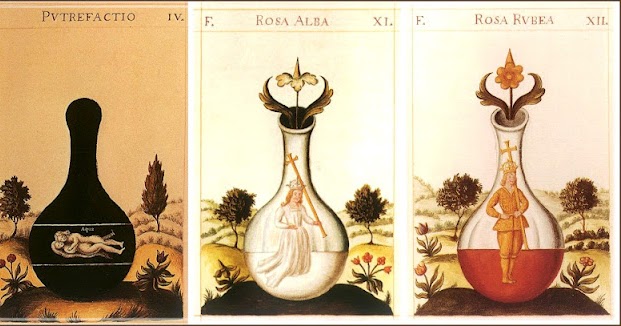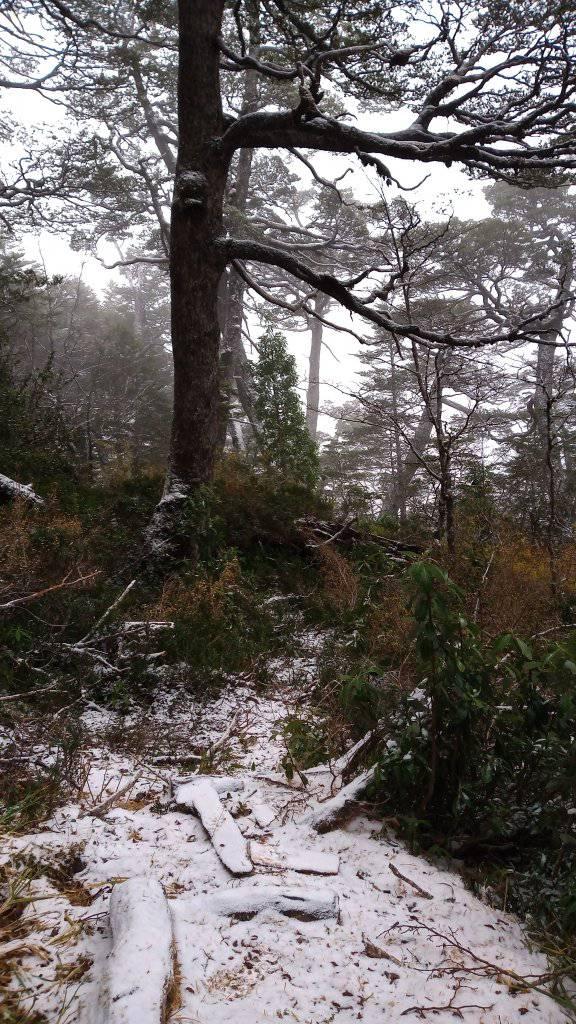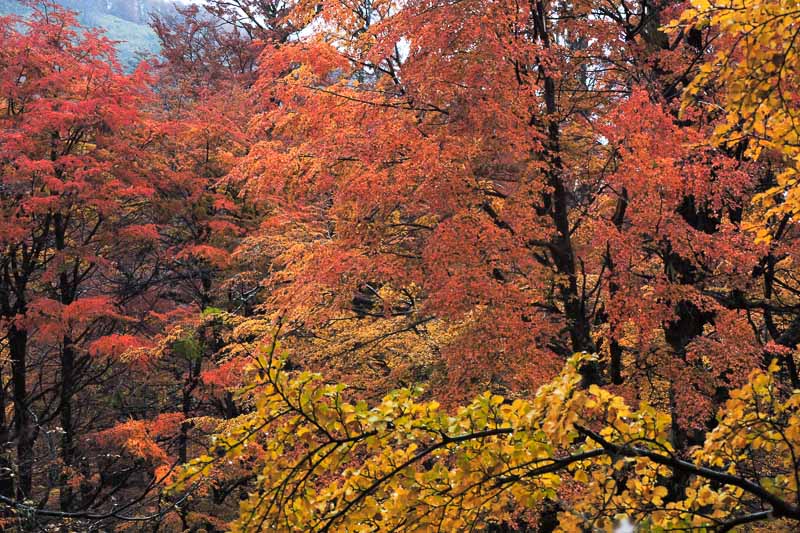In the forests of Patagonia, a couple of weekends before the solstice that marks the beginning of Winter, the Alchemy of Pan, or the magnum opus of the forest, an event occurs that marks the culmination point of Autumn: the change of color and subsequent falling of the leaves of deciduous trees. Autumn is the time when yellow and red/brown temporarily reign among the vaults of the cathedrals of the autochthonous trees of the genus Nothofagus (lenga, coihue, and ñire).
At the base of the pillars of the Cathedral, in the shade of Mercy and Rigor, putrefaction takes place, a strictly necessary stage in the magnum opus, because the work cannot be completed if any of its stages are not in harmony with fullness. The leaves turn yellow and red, and the forests become brown, before detaching from the branches and accumulating on the substrate. There, on the soil, on the face of Demeter, the reddish leaves gradually turn black, disintegrating to feed, with their death, the life that is being gestated.
Here you straightaway behold
A black beast in the forest,
Whose skin is of blackest dye
—Book of Lambspring

Although nigredo, albedo, citrinitas, and rubedo are phases that succeed each other in a linear manner, despite their order, they can all occur synchronously on different planes: in the Cathedral, the processes form an alchemical network where all the phases occur simultaneously but in different aspects and dimensions. Thus, nigredo may be occurring at ground level while albedo may be developing inside a seed, while rubedo may be burning independently of the others but indirectly influencing the unfolding of the unleashed alchemical forces in the Cathedral.
Citrinitas and rubedo, however, become particularly evident in the climax of autumn, preparing the introspection of the Cathedral — its inner work. It is at this moment that the starting point is given for the Cathedral to sink into darkness and cold so that the womb of the Mother becomes the niche where the expectant pulsating life dwells, the engendered embryo that will sprout in spring.
The Adept will transit through the forest, this time, where death will be under his feet, accumulating in layers where division reigns in the breaking of leaf structures, becoming unrecognizable as the season progress, dissolving into an almost homogeneous mass, where the diversity of its components is not distinguished. In the cathedral of deciduous trees, the loss of leaves will reveal the bare framework of branches and limbs where, looking up, without the leaves that covered the vault, the veins of the placenta of the Cosmos are exposed.
The anima flees from the dead body, making a journey through the rhizome, preparing to return to it later when it is imbued with new life. This initiatic journey is embodied by the esoteric hiker who, venturing into the forest, leaves behind his hyper-civilized dead body as if it were a doppelgänger — to return to the wild and wandering, to ambush himself among the labyrinthine paths of the Mother.
There, in the dying Cathedral, he will be tested among the putrefaction of the incipient nigredo, but also of the albedo that arises from Boreas: the white snow brought by the cold wind that announces the beginning of Winter. Silver transmutes into gold, and the alchemist-hiker witnesses the chemical wedding that in its emptiness (or Death) allows the gestation of the Great Work, the end of the blackening process where the imperfections of matter are removed.

